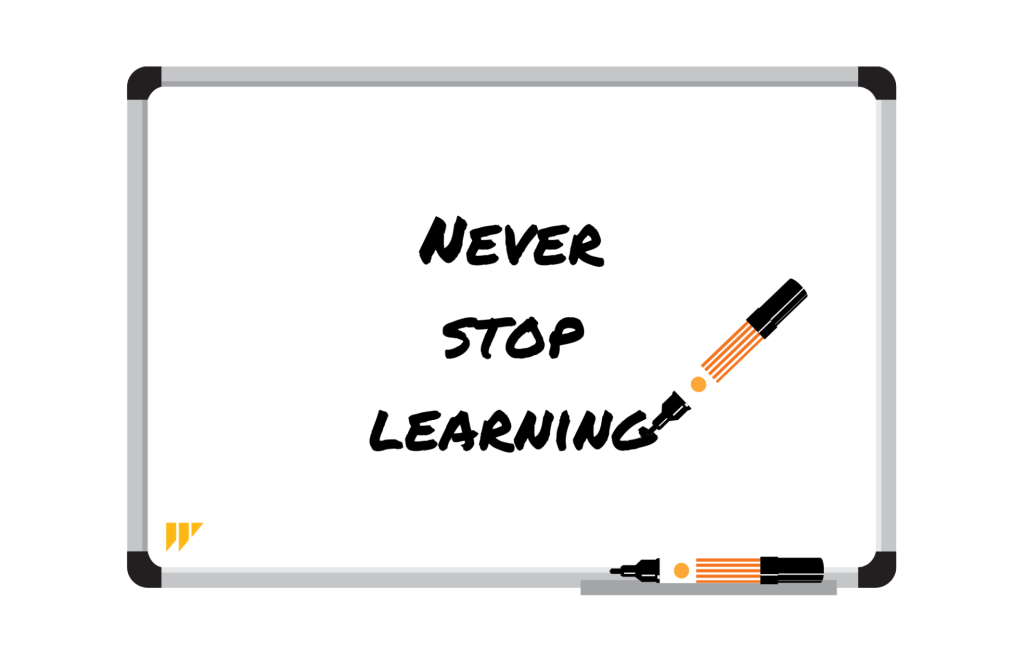
Course Delivery
This collection of resources, from planning to teaching & learning, will be the first step to delivering your course.
How TLC Can Help
The Teaching & Learning Collaborative is committed to helping you create an engaging and well-constructed course. Students learn best when actively engaged in the learning process, collaborating with peers, and solving problems.
“Learning results from what the student does and thinks and only from what the student does and thinks. The teacher can advance learning only by influincing what the student does to learn.”
Herbert A. Simon, quoted in How Learning Works (2010)
What are you hoping to accomplish in the upcoming or current semester?
I want to…
- Prepare my Course
- Promote Active Learning
- Motivate my Students
- Build a Community of Inquiry
- Reflect and Grow
- View References and Resources

Whether it’s your first semester or final, there are always new things to learn about how to facilitate your course, connect with your students, and cultivate a successful learning environment. Use our strategies and resources for ideas!
Please click on the accordion tabs below to read more.
Prepare
What is involved in semester prep?
Semester preparation includes drafting and sharing your syllabus, planning your first-day activities, setting up essential technology tools such as Brightspace and Zoom, and being ready to welcome your students into the classroom – whether virtual, hybrid, or in-person.
Why should I prepare early?
Research suggests that students can determine whether a course will stimulate their learning (or not) within 10 to 12 seconds of interacting with their professors (Bain, 2021). Engaging introductory activities that spark curiosity and create community, an organized Brightspace course, and a warm and authentic welcome are key ingredients to a strong semester start. To maximize your chance at a fantastic first impression, prepare for the upcoming semester well before the first day of class.
How do I get started?
View our Semester Start Toolkit. **change to a button**
How can TLC help?
TLC offers one-on-one consultations and virtual drop-in office hours to help with semester preparation.
Active Learning
What is active learning?
Active learning is a broad term describing any teaching strategy that gets students involved and participating in the classroom, as opposed to a traditional lecture method where instructors are the primary ones delivering, presenting, and performing.
Why should I promote active learning?
In a 2014 meta-analysis of STEM courses that compared traditional lecturing to active learning classrooms, average exam scores were higher and failure rates were lower in active learning classrooms (Freeman et al., 2014). In the words of TLC Instructional Designer Josh Luckens, “The most active people in the classroom are the ones doing the most learning.”
How do I get started?
Ask yourself:
- When you plan your classes, are you asking, “what am I going to do?” or “what are my students going to do?”
- If an outside observer came into your classroom, would they describe you as more of a “sage on the stage” or a “guide on the side?” Are students learning actively or passively in your classroom?
- How can you facilitate participatory learning experiences that empower your students to actively make meaning and construct new understanding?
How can TLC help?
Book a consultation with an instructional designer for new learning activity ideas. We also offer no-stakes course observations to offer you a fresh perspective and support your success as an educator.
Student Motivation
What is motivation?
Motivation is the desire that fuels someone to pursue a goal. Extrinsic motivators like grades or peer expectations help keep students on track as they pursue lower-order thinking tasks like memorization. Intrinsic motivators like genuine curiosity or a clear purpose help students learn beyond the bounds of your classroom using higher-order thinking skills like analysis, application, and creative problem solving (Pink, 2009). Provide multiple means of engagement to reach students with different motivations, as your teaching strategies influence student motivation, for better or for worse.
Why should I help motivate students?
Research indicates that learners who are intrinsically motivated demonstrate more persistence and more creativity when solving problems – essential elements of student success! Intrinsic motivation emerges when someone has some autonomy to complete a task on their terms, finds purpose within the task, and can work towards mastery of that task (Pink, 2009). A sense of belonging, self-efficacy, and enjoyment also enhance motivation in learning environments (McGuire, 2015; Raffini, 1995).
How do I get started?
Ask yourself:
- What makes this topic meaningful to me? What motivates me to teach this course? How can I share my genuine passion for the subject with my students?
- How will engaging with this material open students’ eyes to wonderful new possibilities? Why should they care as deeply as I do? How can I help them make their own purposeful connections to this topic?
How can TLC help?
We encourage Transparency in Learning & Teaching (TILT) practices to increase student motivation and success. In the TILT framework, every activity in the course has a clearly expressed purpose, task, and method of assessment associated with it. This transparency helps students know what to expect when completing activities and can support their motivation to persist with them. Learn more about TILT from these resources we’ve created:
- Blog post: Enhance Student Success with Transparency: Purpose, Task, Criteria
- Blog post: From Our Toolkit to Yours: TILT!
- CoLab Podcast: Episode 02: Transparency in Learning & Teaching (TILT)
For more ideas, contact us today!
Community Building
“It’s not enough for students to work with your content. It’s not even enough for students to work with you. They must work with each other, too, to learn and succeed.”
Flower Darby, Small Teaching Online (2019)
What is building community?
A classroom community is united by the shared pursuit of learning goals. When you teach, you create an environment in which your students can connect, exchange ideas, and learn from one another. When you cultivate a supportive culture of collaborative inquiry, you set up your students to learn more effectively.
Why is it important to build community?
Students learn from both interacting with their professors and with their fellow classmates. Instructors often have “expert blind spots,” making it difficult to see the topic with a “beginner’s mind.” Students benefit from peer instruction because hearing the material framed from a novice learner’s perspective helps promote more rapid understanding of new concepts (Ambrose et al., 2010). Additionally, belonging to a community of learners bolsters student success across the board, but specifically promotes improved educational outcomes for students from historically marginalized backgrounds (Darby & Lang, 2019).
How do I get started?
Try these:
- Review your syllabus. How are you building an inviting community of shared inquiry based on the tone of your syllabus? How do you use your syllabus at the beginning of the semester to welcome students to your course? What changes could you make to enhance intrinsic motivation and feelings of belonging?
- How do students get to know and trust both you and their fellow classmates on your first day of class? How do your initial activities build the foundation for a healthy learning community throughout the semester?
- How do students meaningfully interact with each other across your course? How do you empower students to play an active role in building a community of inquiry alongside you?
How can TLC help?
Book a consultation with an instructional designer for new learning activity ideas. We also offer supportive, no-stakes course observations and instructional coaching to give you a fresh perspective and support your success as an educator.
Create a Culture of Engaged Participation
What is classroom culture?
This refers to the tone and shared expectations of the learning community that you build in your courses. Establishing a culture of student engagement and active participation from day 1 is foundational to fostering a safe and successful learning environment.
What does a strong culture of class participation look like?
In an engaged classroom, students ask questions and share their ideas freely. Mutual expectations are clear and support students in stepping outside of their comfort zones, collaborating productively, and discovering new ways to demonstrate their newfound understanding.
Sometimes it can be hard to get students talking and participating, and teaching can start to feel like a one way street instead of a dynamic conversation. If this happens to you, fear not! TLC is here to help.
How can I create a culture of active participation?
Classroom culture is established early in the semester, so check out TLC’s article featuring our top 5 strategies for creating a strong culture of class participation in your courses. But it’s never too late to try these straightforward teaching techniques to get your students more actively participating, so check out the article and let us know how it goes!
How can TLC help?
Our instructional designers love observing courses and giving no-stakes, judgment-free feedback on specific, actionable things faculty can do in the classroom to more deeply engage students. Reach out to us at teach@wit.edu for a supportive and personalized teaching consultation.
Reflect and Grow
What is reflection?
Reflection is the path to growth. Even if you’ve been teaching for years, there are always new things you can learn and new ways to support your students as they enter your field. Both introspection and bouncing ideas around with either an instructional designer or other professors can help you identify areas for growth, formulate new teaching strategies, and set goals to move forward with confidence.
Why should I reflect?
Reflection is a key step in David Kolb’s experiential learning cycle, in which one draws lessons from and ascribes meaning to past experiences (Kolb & Kolb, 2017). Reflecting can help you determine what is going well in your teaching, what could be going better, and identify actionable steps to enhance your teaching practices.
How do I get started?
Visit our Reflection Page for reflection ideas and resources. Then identify a “plus-one”— one manageable addition or change you could make in the next semester to fine-tune your teaching and learning environment to benefit your students.
How can TLC help?
TLC is proud to provide the Wentworth community with Teaching Reflection Journals, a personal journal you can use for authentic reflective notes to yourself. Request one today!
“I have been bowled over by the number of students who, when we first met, were completely unwilling to do work, but who – as soon as I expressed support and belief in their abilities – became willing to do enormous amounts of work.”
Saundra McGuire, Teach Students How to Learn (2015)
